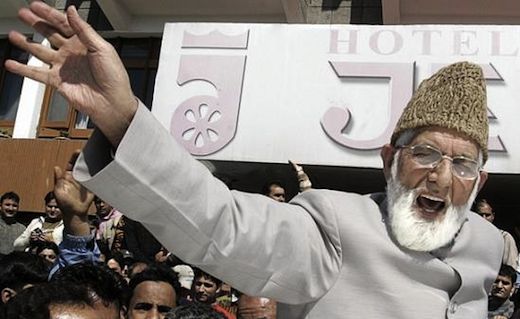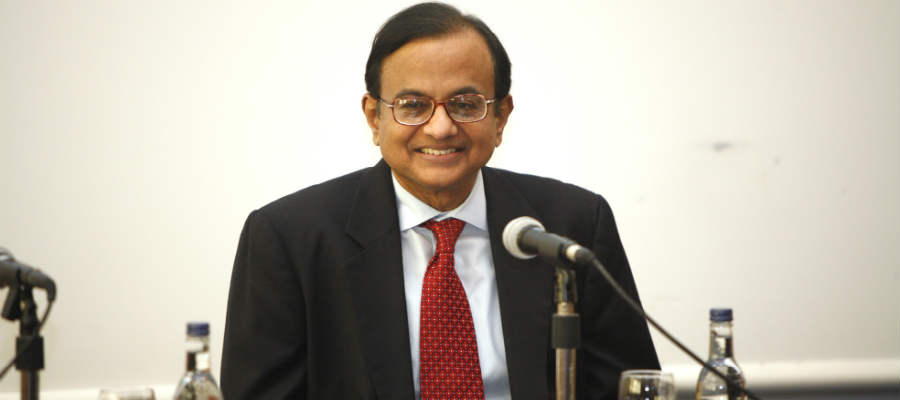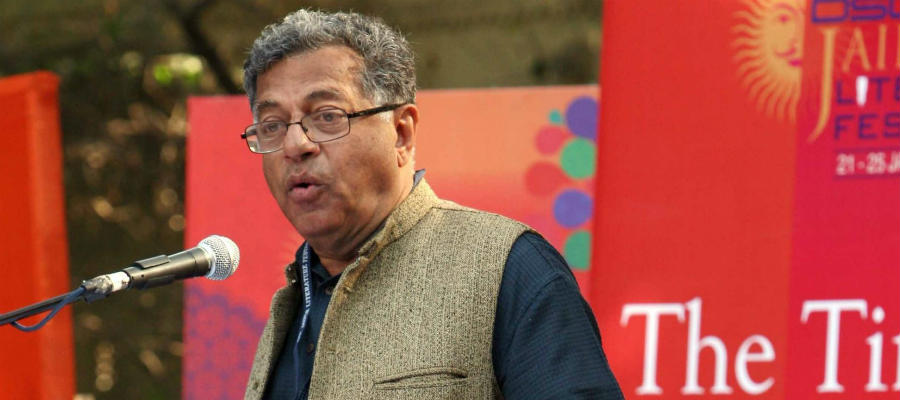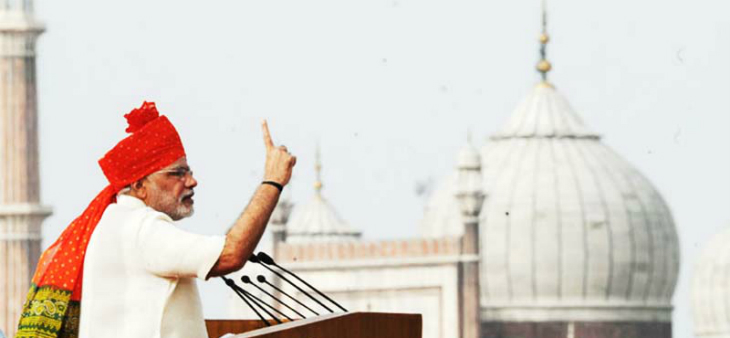This is the last post of a three-part series on how successive recent Indian governments have plotted to give away Kashmir. It is written by Dr. Ajay Chrungoo, Chairman of the Panun Kashmir, a frontline organization of Kashmiri Pandits. Dr. Chrungoo is a guest writer with Canary Trap.

BY DR. AJAY CHRUNGOO
The Working Group on Confidence Building Measures (CBMs) never discussed anti-terrorism measures as an important confidence building measure for the return of normalcy in Jammu and Kashmir. It did not at all debate the relevance of anti-terrorism laws in the state in the light of the ongoing terrorist campaign. It did not even cursorily address the human rights violation in the state due to terrorism. The Working Group focused primarily on the state specific aspects of human rights violations just as Amnesty International and Asia Watch used to do in 1990’s.
The mindset employed can be understood by the written admission of the Working Group on CBMs while dealing with the question of internally displaced Kashmiri Hindus, “the Working Group concerns itself with the rehabilitation and improvement of conditions of the militancy victims and did not go deeper into the causes or the genesis of the militancy in the state.” The Working Groups followed a clear cut direction to ignore all issues which would bring into focus the issues of ideologically motivated violence in the state and bring the ugly side of armed Muslim separatism in the state to light. Their recommendations were meticulously in line with the separatist demands.
The Working Group on CBMs recommended abrogation of Armed Forces Special Powers Act (AFSPA), relief not only to the victims of terrorism but the families of the killed terrorists, create conditions for the return of persons to Jammu and Kashmir who had gone to Pakistan Occupied Kashmir (PoK) and Pakistan for training and organizing support for armed separatism etc. Only lip service was rendered to all other issues, including the problems faced by refugees, who had come from West Pakistan, while the PoK refugees of 1947 were not even mentioned in the report. The political motivation at work from behind can also be clearly understood by reading some recommendations of the same Working Group. The recommendations state, “To start unconditional dialogue process with militant groups for finding sustainable solutions to the problems of militancy….To examine the role of media in generating an image of the people of the state so as to lessen the indignity and suspicion that the people face outside the state”. The group on strengthening Relations across LoC never even considered the issue of illegal economy in the state and impact on it by cross LoC trade. It never discussed the issue of Middle East based business mafia seeking to suck up Jammu and Kashmir into its lap even when the leaders of the business committee in Kashmir have been openly canvassing with their fraternity that cross LoC trade would integrate Kashmir Valley with the economy of Middle East, not Pakistan.
Using the separatists
The Working Group recommendations strengthened the processes already unleashed to bring about economic and political integration of the Muslim majority areas of Jammu with the overwhelmingly Muslim Kashmir valley. Construction of Mughal Road (connecting Poonch-Rajouri with Kashmir through Shopian-Pulwama), and Sinthan Top Road (connecting mountainous Kishtwar district with Anantnag) were given further impetus. The handing over of the national power projects to J&K government assumed new stridency during the RTCs and WG meetings and the subsequent recommendations have already created an agenda for developing the infrastructure (economic, legal and political) for the Greater Muslim Kashmir.
During the deliberations of the third RTC, the Muslim representatives from Kargil vehemently opposed the concept of demilitarization and brought to light the humane role played by Indian security establishment for the people living in Kargil, Drass and other remote areas. The entire exposition eventually was ignored and never allowed to be known in the rest of the country primarily because GoI had already embarked upon the process of demilitarization. In the same RTC, the then MLA from Bandipore addressed the PM and said, “Sir, why was the All Party Hurriyat Conference Chief Syed Ali Shah Gilani released from jail before this conference. What was the assessment of Govt of India? If he was released why was he allowed to address a public rally at the airport itself? What was the assessment of GoI about this? Do you know Sir that Lashkar-e-Taiba flags were flaunted in this rally? Do you know Sir what were the slogans raised in the rally? Sir, they raised the slogans – Lashkar Aayi, Lashkar Aayi, Manmohan ki Maut Aayi, Azad ki maut Aayi.” The release of the radical pro-Pakistan Hurriyat leader retrospectively seems to have a purpose. Gilani was perhaps released to raise the din of radical demands outside so that the proposals of Self Rule, Greater Autonomy raised by Peoples Democratic Party and National Conference within RTC appear to be moderate options and could be endorsed.
The attitude of Government of India to Jamaat, Ali Shah Gilani and Dukhtaran-e-Millat (DeM) appears to have a purpose when we see that it is the GoI which is investing in pushing through the Kathwari/Dixon plan as a solution. While all other separatist leaders have lost their credibility and potential to mobilize public, it is only Syed Ali Shah Gilani, DeM and Jamaat-e-Islami which can keep the pot boiling in the public and provide the required pressure and momentum to the Indian government for giving concessions. It is well known that whenever the government acted firmly on the ground, the Intifada never took off. And it assumed the proportions of an uprising when the Indian government publicly declared retraction of its authority from the ground. Omar Abdullah asked the Prime Minister in one of the RTCs as to why has been Government of India always befriending and encouraging such elements in J&K who have a manifest anti-India stand on Kashmir.
Giving away of Kashmir is basically a process of recasting the concepts of sovereignty of Indian Nation, its frontiers and its secular vision. The Self Rule document of PDP, which many believe has been prepared by Government of India, openly talks about redefining the concepts of nation, sovereignty, ethnicity, regions etc. When the Indian government talks about porous borders, rendering borders irrelevant, settlement between stakeholders, it is talking about a fundamental ideological shift in the nation building vision. To qualify them as tactical interventions or strategic imperatives, right or wrong, will be a gross misjudgment.
Bogey of US pressure
To those who pose serious questions about the gradual process of capitulation in Jammu and Kashmir conducted and calibrated by sections of the State, the argument put forward to silence them in the back channels is the intense international pressure brought about by USA and China on India. It is not incidental that one of the first public expressions of a ‘Two Front’ situation for India has been given by none other than Brijesh Mishra, the National Security Advisor to Vajpayee Government and one of the brains which set the peace process with Pakistan rolling. Prodded and patronized by the State, a voluntary censorship seems to be in vogue not to discuss the content and quality of this pressure. It is true that even after 9/11 the United States has not given any indication that it has changed its policy on Kashmir or Pakistan vis-a-vis India. But it is also true that at a time when it is being parroted from within India that GoI has been forced to enter into a dialogue with Pakistan under US pressure, American government has publicly released the information about terrorists arrested in the US which link the 26/11 terror attacks in Mumbai directly to serving officers in Pakistani Army. The statement of Robert Gates that India may loose its reserves of restrain in case of one more terrorist attack on Indian soil was less a prodding in favour of a dialogue and concession to separatists and more a warning to Pakistan.
This is not to say that the US is not seeking such cooperation from India which addresses its concern more than Indian concerns. The fact is that the US has a lesser leverage to exert pressures on India than it had before 9/11. Before the terror attacks on twin towers in New York, US government had its relations intact with Pakistan and rest of the radical Muslim countries around the Middle East. It had not entered Iraq and was exploring a relationship with Taliban. Now the situation is different. The US, by the admission of its own experts, is over stretched and needs India more in an atmosphere of global recession than any time in history. Why is Government of India more than willing to accommodate American view now than it has been ever before? Not only that, why are propaganda campaigns like the suspension of aid to Jammu and Kashmir by World Bank (because it has suddenly woken up to recognize Jammu and Kashmir as a dispute) left uncontested? That too when the representative of the bank has clarified that they are continuing to finance many projects in India including Jammu and Kashmir.
The bogey of increasing international pressure is being crafted from within to target Indian public opinion at a time when dialogue with separatists is going on and Pakistan is unraveling from within. A section from within the government and the political establishment wants to present a compromise in Jammu and Kashmir as a deliverance to the nation from a perpetual confrontation, even if it means abandoning its frontiers, its people in the state, its civilisational responsibility, central features of its eco-heritage, secularism and everything which India stands for.
I participated in the first SAFMA conference in New Delhi immediately after a group of Pakistani Journalists had for the first time visited Jammu and Kashmir. During the lunch session of the conference I overheard a conversation between the visiting Pakistani journalist and an official of the Pakistani embassy in India. The journalist was telling the official in Urdu that Indians, while talking about settlement of Kashmir issue, always say that they cannot allow second Partition of India. The Pakistani official retorted back that Gandhi and Nehru also used to say like this before the partition. (Concluded)
Click here for Giving away Kashmir – Part 1
Click here for Giving away Kashmir – Part 2


